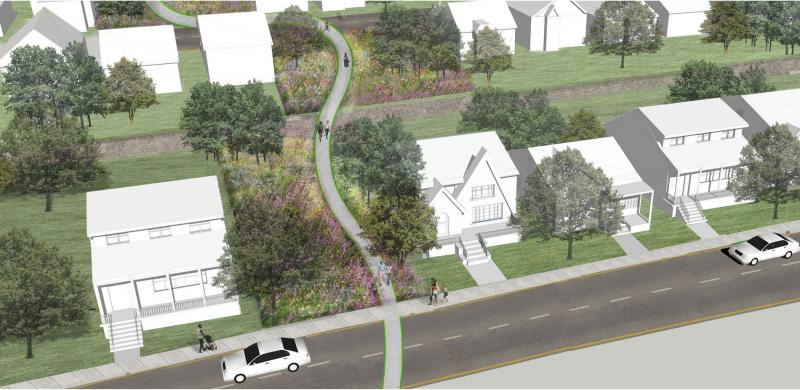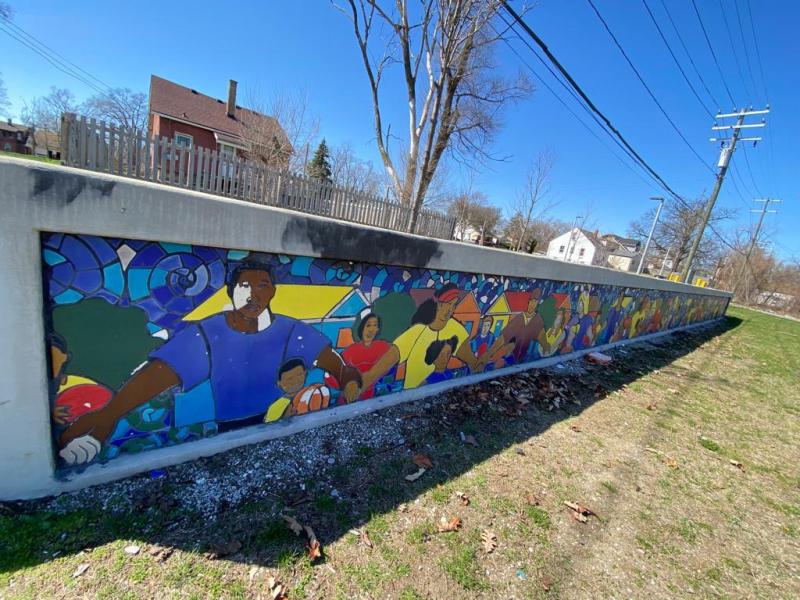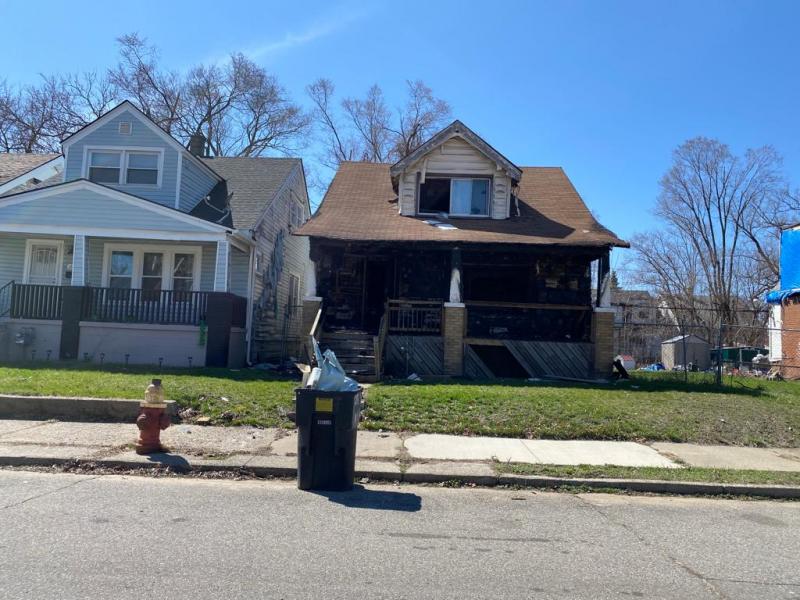-
Name of property current (historical)
-
Fitzgerald Neighborhood
-
Entry author
-
Begum Gokdag Ersozoglu
-
Abstract
-
The city of Detroit, known as the Motor City, where houses can be purchased today for nearly the cost of a new car, is currently undergoing revitalization efforts from both municipal incentives and philanthropic organizations. Detroit experienced its rise and fall due to the automotive industry. It was once a city where the headquarters of Ford, Chrysler, and General Motors were located, and therefore thousands of workers migrated, especially from the South. When the oil shortage in 1973 decreased the demand for American-made cars, factories started to shut-off and workers started to be lay-off. The city became dysfunctional and fell into poverty over time. As a result, several organizations have been trying to revive it since the 2010s.
Located between Detroit Mercy and Marygrove College, Fenkell, next to the Livernois corridor, the Fitzgerald neighborhood has been waiting for a major transformation since 2017. The project was expected to renovate 115 residences, demolish 16 blighted building and landscape 192 vacant lots in two years. Due to various reasons the project could not be completed within the promised time frame and its process was extended until 2024. In this study Fitzgerald Revitalization Projects details were examined and the reason for the delay was questioned.
-
Address
-
Fitzgerald/Marygrove Detroit, MI
-
Date (comission)
-
Announcement : April 5, 2017
-
Date (completion)
-
The project, which is expected to be completed in 2019, has been extended to 2024.
-
Date (modification, adaptation, renovation)
-
Start of the Project: October, 2017
Deadline: Fall 2019
Prolonged Deadline: 2024
-
Gift giver/ funder/ contributor
-
*The Skillman Foundation: Based in Detroit
*The Ford Foundation: Based in Detroit
*The Kresge Foundation: Based in Detroit
*The Rockefeller Foundation: Based in New York
*The JPB Foundation: Based in New York
*The John S. and James L. Knight Foundation: Based in Florida
-
Beneficiaries and impact on the community
-
New infrastructure, new community spaces (parks), the accompanying sense of security and community revitalization.
-
Was it part of a network of buildings?
-
This project is an urban design project at the neighborhood scale.
-
Sustainability (financial, cultural)
-
Cultural and financial sustainability is the target of this project.
-
Size/ scale
-
Fitzgerald neighborhood is located in the northwest of Detroit, spanning over a 6-square-mile area and predominantly inhabited by African American residents whose annual income varies between $ 13.000-$100.000. (Savaglio & Baciu, 2022). The area is close to higher education institutions – Marygrove College and Detroit Mercy- and Livernois business corridor (Jay & Concklin, 2020)
-
Was the community involved in the process?
-
Although the project managers stated that the residents of the city were included in the project, Guillen (2020) underlines that after the interviews he made in the article, the things to be done before the project was introduced were determined and the opinion of the community was not taken.
-
Q1: What were the motivations of the gift-giver and the implications of the gift for the community ?
-
In 2017, Mike Duggan, running for re-election in the mayoral campaign and subsequently getting elected again, unveiled the Fitzgerald Revitalization Project. This two-year plan was a component of his $30 million "Strategic Neighborhood Fund" campaign (Runyan, 2017). His aim for this revitalization project was to renew 115 abandoned homes, landscape 192 vacant lots and create a 2-acre park for the community and consequently attract new investors to the city (City of Detroit, 2017) (Images 1,2,3). In addition to the University district and the developing Livernois area, Fitzgerald is also very close to Palmer Woods and to the renovated houses with prices varying between 200,000 and 800,000.
Efforts were made to contact Fitz Forward companies for more timely information about the Fitzgerald Revitalization Project but were unsuccessful. As a result, a visit was made to the Fitzgerald neighborhood to gather information. The consensus among the residents is that the content of the revitalization project should be improved. Some residents were dissatisfied with the project, which they saw as inadequate, while others stated it was just a start. As part of the Revitalization project, the Ella Fitzgerald Park was established and a few houses were renovated, but the promised number of house renovations has not been reached yet. (Images 4 – 15).
As a result, a visit was made to the Fitzgerald neighborhood to gather information. A family in their thirties, with a baby, expressed their intention to leave the Fitzgerald neighborhood soon and were actively saving money for this purpose. When asked about their reasons for moving, they cited ongoing safety concerns and the inadequacy of the renovations carried out as part of the Revitalization Project. The family highlighted that, even in 2023, the vacant houses surrounding the park remained in disrepair, with no apparent action taken to address the issue. Additionally, they pointed out the lack of a nearby market, which forced them to use public transportation for their grocery needs.
They suggested that the Revitalization Project should focus on building new markets and facilities, such as daycare centers for children, rather than just “putting a few picnic tables and slides under the name of the park” (Image 9, 10). They argued that the Revitalization Project was a gentrification project aimed at pushing the residents out of the area rather than improving their lives. Other residents who viewed the Fitzgerald Revitalization Project as gentrification were a father and son in their 70s and 40s, respectively. They believed that the sole purpose of the revitalization project was gentrification but had different opinions on how it was being carried out. They mentioned that the houses were being sold primarily to white people who did not respect the neighborhood's culture and did not try to integrate with the local community.
In general, in Detroit, contractors buy and rehabilitate old homes that are in poor condition, and then attempt to sell or lease them for quantities that residents cannot afford. This causes the rents and property taxes of the surrounding houses to increase and the residents of the neighborhood to leave their homes (Carlisle, 2020; Mah, 2021). As a result, many Black Detroiters are moving out of Detroit every year for better living conditions, lower taxes, better schools and for security (MacDonald & Tanner, 2021; Neavling, 2023; Williams, 2020). In other words, Detroit's bad luck repeats itself behind words like “renewal”, “improvement” and “revitalization”.
The City of Detroit mentioned philanthropists had sales tax revenue bond for streetscape. While tax incentive might not be the only motivation for funding, it may have a major impact on it (Baciu et al., 2021) Although not specifically related to Fitzgerald, a situation experienced in March 2023 supports this idea. Detroit City Council decided to delay a vote on $800 million tax incentive for Detroit’s development project. Opponents argued that Ilitch Family, the owner of Little Caesars Arena, have not followed their promises when they were given tax breaks a decade ago. (The Ilitch family is one of the major philanthropic donors to Detroit. The reason why the Little Caesars Arena has come into the spotlight is due to the Ilitch family's failure to keep their promises). While some residents agree with the opponents, some think that they would benefit from the tax incentive by starting a career and having housing options. The city stated that if there was no delay, the project would create $1.5 million investment and thousands of jobs (Meadows, 2023).
A striking point in the conversations with Fitzgerald residents is that although they expressed satisfaction with the work, they thought the Revitalization Project needed revision. This seemingly contradictory sentence underlines how long the Fitzgerald neighborhood was left to itself as the conversations progressed. A 30-year-old mother of three and another Fitzgerald resident mentioned that there was no park for many years, and having a park where she can bring her children daily makes her happy and feel secure. Another resident, who grew up on the east side of Detroit and lived in the Fitzgerald neighborhood for the past few years, also commented on the Fitzgerald Revitalization project. He expressed that the small number of renovated houses and Ella Fitzgerald Park are a positive step forward, stating they are "better than nothing." Additionally, he hopes for the project to include a community space for children to visit during the winter and for there to be accessible markets within walking distance.
Residents interviewed in the Fitzgerald neighborhood feel that philanthropic organizations have somehow benefited from gentrification. The neighborhood's proximity to the developing area of Livernois and the fact that the renovated houses are not affordable for residents confirm their thoughts on the subject. The fact that potential counterpart of the postponed $800 million tax incentive is estimated as $1.5 million, can indicate that reciprocity emerges somehow. As for the Fitzgerald neighborhood, there is a process that has not yet been completed, it is not clear when it will be completed, and in fact, there is a slow progressing process. Moreover, it is not fully understood on what basis the renovations were made. For example, there are still blighted properties around Ella Fitzgerald Park (Images 16). It is very possible to see a blighted property right next to a renovated house (Image 17).
Besides tax incentives, Revitalization Project seems to be a good advertising campaign. The best, perhaps the only way to better understand the Fitzgerald Revitalization project and see the impact of the work done is to visit the neighborhood. Although the Fitzgerald Revitalization Project has not been completed within the initially promised timeframe, it is portrayed by some media and philanthropic organizations and the city itself as a successful endeavor in its current state, having improved the quality of life for residents.
-
Q3: Do the design characteristics (i.e material, layout, location) reflect either the culture of the giver, the culture of the receiver, or a mixture of both?
-
The Revitalization project is mostly aimed at renovating existing buildings, demolishing houses that are too bad to be renovated and turning them into public spaces. In this sense, when the renovated houses are compared with their old versions, it is seen that the renovations mostly resembles the original state of the house, and the changes are design decisions such as the facade material and color.
-
Q4: To what extent did the gift-giving process shift away from the original timeline due to financial and/or social issues associated between the giver and receiver?
-
The Fitzgerald Revitalization project was announced in 2017 and it is promised that the project will be completed in 2019. During this process, Ella Fitzgerald Park was built and 13 vacant homes were rehabbed, among seven was sold and twenty lots of vacant land were landscaped for less than $300.000. However, the initially promised figures could not be reached, and the project completion date has been postponed to 2024 (Guillen, 2020). The Fitzgerald Revitalization Project was delayed because no preliminary work had been done on the issues and therefore the time frame was unrealistic. It was stated that problems arose due to the fact that the current project covers a very large area, and instead of doing this, the neighborhood should be designed and renovated piece by piece (One Detroit, 2020).
-
Bibliography
-
Baciu, A., Savaglio, L., & National Academies of Sciences, E. (2021). Harnessing the value of co-creating and stewarding places for health, equity, and well-being : proceedings of a workshop.
Carlisle, J. (2020, May 24). Detroit neighborhood group sees gentrification as the enemy. Detroit Free Press. https://www.freep.com/in-depth/news/columnists/john-carlisle/2020/05/24/detroit-neighborhood-gentrification-protest-carlisle/4954702002/
Clark, D. J. (2018). Disruption in Detroit: Autoworkers and the Elusive Postwar Boom (Working Class in American History).
Guillen, J. (2020, February 21). Detroit neighborhood redevelopment project to take 3 times longer than promised. Detroit Free Press. https://www.freep.com/story/news/investigations/2020/02/21/detroit-fitzgerald-neighborhood-rehab/4646941002/
Jay, M., & Concklin, P. (2020). A People`s History of Detroit.
MacDonald, C., & Tanner, K. (2021, August 21). Detroit’s population decline continues for 7th straight decade, 2020 census data shows. Detroit Free Press. https://www.freep.com/story/news/local/michigan/2021/08/12/census-2020-detroit-michigan/5544211001/
Mah, J. (2021). Gentrification-Induced Displacement in Detroit, Michigan: An Analysis of Evictions. Housing Policy Debate, 31(3–5), 446–468. https://doi.org/10.1080/10511482.2020.1800781
Meadows, V. (2023, March 21). City Council delays vote on $800M District Detroit tax incentive. Fox 2 Detroit. https://www.fox2detroit.com/news/city-council-delays-vote-on-800m-district-detroit-tax-incentive
Neavling, S. (2023, March 29). Black Detroiters are fleeing the city at an alarming rate. Detroit Metro Times. https://www.metrotimes.com/news/black-detroiters-are-fleeing-the-city-at-an-alarming-rate-32716634
One Detroit. (2020, July 29). Fitzgerald neighborhood in Detroit. www.youtube.com.
Peterson, J. S. (1979). Black Automobile Workers in Detroit, 1910-1930. The Journal of Negro History, 64(3).
Runyan, R. (2017, April 5). Fitzgerald revitalization to include 115 rehabbed homes, new park, green space. Curbed Detroit. https://detroit.curbed.com/2017/4/5/15191290/fitzgerald-redevelopment-plan-announced
Steve Neavling. (2023, March 28). Detroit City Council will soon vote on an $800 million tax incentive for the Ilitch family and billionaire Stephen Ross. The Ilitch family failed to deliver on its development promises when it received hundreds of millions a decade ago. Twitter.Com.
Strategic Neighborhood Fund Begins Work in Detroit’s Fitzgerald Neighborhood. (2017, April 5). City of Detroit. https://detroitmi.gov/news/strategic-neighborhood-fund-begins-work-detroits-fitzgerald-neighborhood
The Henry Ford. (2013, February 26). African American Workers at Ford Motor Company. The Henry Ford. https://www.thehenryford.org/explore/blog/african-american-workers-at-ford-motor-company/#:~:text=Growing%20numbers%20of%20Southern%20migrants,with%201%2C675%20working%20at%20Ford.
Williams, J. P. (2020, January 22). A Tale of Two Motor Cities. US News. https://www.usnews.com/news/cities/articles/2020-01-22/amid-detroits-rebirth-many-african-americans-feel-left-behind
-
Mediator
-
City of Detroit and Fitzgerald Neighborhood Community
 Image 1: Render of Ella Fitzgerald Park (Doumar, 2018)
Image 1: Render of Ella Fitzgerald Park (Doumar, 2018)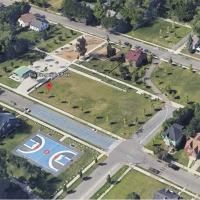 Image 2: Ella Fitzgerald Park (Google Earth,2023)
Image 2: Ella Fitzgerald Park (Google Earth,2023) Image 3: Proposed Landscape (Spackman Mossop Michaels)
Image 3: Proposed Landscape (Spackman Mossop Michaels) Image 4: 16770 Tuller house-2009 version (Google Maps, 2009 Accessed: 03/04/23)
Image 4: 16770 Tuller house-2009 version (Google Maps, 2009 Accessed: 03/04/23) Image 5: 16770 Tuller (Runyan, 2018)
Image 5: 16770 Tuller (Runyan, 2018) Image 6: A speed bump made as part of the Revitalization Project (Begum Gokdag Ersozoglu Archive, 2023)
Image 6: A speed bump made as part of the Revitalization Project (Begum Gokdag Ersozoglu Archive, 2023)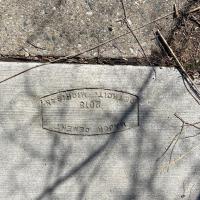 Image 7: A paving stone made in 2018 (Begum Gokdag Ersozoglu, 2023)
Image 7: A paving stone made in 2018 (Begum Gokdag Ersozoglu, 2023)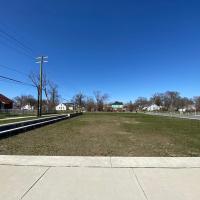 Image 8: Ella Fitzgerald Park (Begum Gokdag Ersozoglu Archives, 2023)
Image 8: Ella Fitzgerald Park (Begum Gokdag Ersozoglu Archives, 2023) Image 9: Ella Fitzgerald Park (Begum Gokdag Ersozoglu Archives, 2023)
Image 9: Ella Fitzgerald Park (Begum Gokdag Ersozoglu Archives, 2023) Image 10: Ella Fitzgerald Park (Begum Gokdag Ersozoglu Archives, 2023)
Image 10: Ella Fitzgerald Park (Begum Gokdag Ersozoglu Archives, 2023) Image 11: Basketball court and grafitti painting in Ella Fitzgerald Park (Begum Gokdag Ersozoglu, 2023)
Image 11: Basketball court and grafitti painting in Ella Fitzgerald Park (Begum Gokdag Ersozoglu, 2023) Image 12: An alley leading to Ella Fitzgerald Park (Begum Gokdag Erszoglu Archives, 2023)
Image 12: An alley leading to Ella Fitzgerald Park (Begum Gokdag Erszoglu Archives, 2023) Image 13: Ella Fitzgerald Park Operating Hours ( Begum Gokdag Ersozoglu, 2023)
Image 13: Ella Fitzgerald Park Operating Hours ( Begum Gokdag Ersozoglu, 2023) Image 14: Murals of Live6 (Kresge Foundation) artist Hubert Massey in Ella Fitzgerald Park (Begum Gokdag Ersozoglu Archives, 2023)
Image 14: Murals of Live6 (Kresge Foundation) artist Hubert Massey in Ella Fitzgerald Park (Begum Gokdag Ersozoglu Archives, 2023)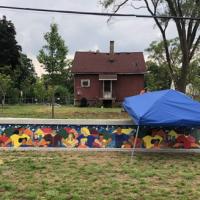 Images 15: Murals of the artist Hubert Massey in Ella Fitzgerald Park (Doumar,2018)
Images 15: Murals of the artist Hubert Massey in Ella Fitzgerald Park (Doumar,2018) Image 16: The blighted houses behind Ella Fitzgerald Park (Begum Gokdag Erszoglu Archives, 2023)
Image 16: The blighted houses behind Ella Fitzgerald Park (Begum Gokdag Erszoglu Archives, 2023) Image 17: Blighted property right next to a renovated house (Begum Gokdag Erszoglu Archives, 2023)
Image 17: Blighted property right next to a renovated house (Begum Gokdag Erszoglu Archives, 2023)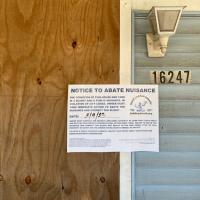 Image 18: Letter of Nuisance (The written note: The condition of this House and yard is a blight and a public nuisance, in vıolation of City Codes, owner must take immediate action to abate the nuisance and correct the blight. Date: 3/9/2023. Owner must contact the Detroit Land Bank Authority no later than 3 days from the date on this poster to prevent legal action being taken) (Begum Gokdag Ersozoglu Archive, 2023)
Image 18: Letter of Nuisance (The written note: The condition of this House and yard is a blight and a public nuisance, in vıolation of City Codes, owner must take immediate action to abate the nuisance and correct the blight. Date: 3/9/2023. Owner must contact the Detroit Land Bank Authority no later than 3 days from the date on this poster to prevent legal action being taken) (Begum Gokdag Ersozoglu Archive, 2023) Image 19: A vacant building that was ordered to be demolished (Begum Gokdag Ersozoglu Archive, 2023)
Image 19: A vacant building that was ordered to be demolished (Begum Gokdag Ersozoglu Archive, 2023) Image 20: Notice to the owner of the Vacant building (Begum Gokdag Ersozoglu Archive, 2023)
Image 20: Notice to the owner of the Vacant building (Begum Gokdag Ersozoglu Archive, 2023) Image 21: A vacant building (Begum Gokdag Ersozoglu Archives, 2023)
Image 21: A vacant building (Begum Gokdag Ersozoglu Archives, 2023) Why wasn't the Fitzgerald Revitalization Project finished in 2019 as promised?
Why wasn't the Fitzgerald Revitalization Project finished in 2019 as promised? Image 21: Vacant houses waiting to be renovated or demolished behind Ella Fitzgerald Park (Begum Gokdag Erszoglu Archives, 2023)
Image 21: Vacant houses waiting to be renovated or demolished behind Ella Fitzgerald Park (Begum Gokdag Erszoglu Archives, 2023)

